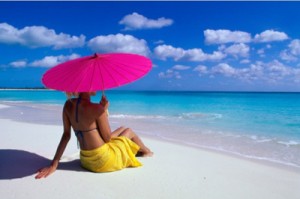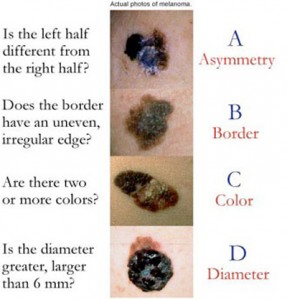
- News
- 06/05/2019
- 1
Sunny climate is appealing, but too much sunshine can be dangerous. Tropical countries have very high rate of skin cancer and Australia has the highest death rate from this disease in the world
Luckily, in Vietnam, the rate is still very low due to the fact that Asian skin types are genetically protective against this deadly disease. But if you are of the fairer skin…beware of the Vietnam Sun!
How does sun cause cancer?
The sun’s rays provide light and warmth. But there are also rays called ultraviolet radiation (UVR), which you can’t see or feel, but they can damage skin and are the most common cause of skin cancer. The sun also ages skin prematurely and con- tributes to some eye problems, including cataracts.
Who is at risk from skin cancer?
Everyone. Although people with fair skin and blue eyes have a higher risk, people with darker skins can still develop skin cancer. Outdoor workers are at risk – so are indoor workers who spend weekends or holidays in the sun. People with many moles or freckles are more at risk, so are people who were sunburnt or were in the sun a lot when they were children. It may be that children’s skin is more easily damaged by UVR – that’s why it’s important to get children and teenagers into the habit of protecting their skin.
How serious is skin cancer?
There are three types of skin cancer. Most can be easily treated, but one type of skin cancer – melanoma – can be fatal if not detected early enough.
What are the warning signs of skin cancer?
The first sign is usually a spot, mole or freckle that has changed color, shape or size a new spot that’s different to other spots on the skin in that area a sore that doesn’t heal. See your doctor if you notice any of these changes.
How can I protect my family from skin cancer?
Try to avoid the sun when UV rays are strongest – between 10am and 2pm (11am to 3pm in daylight saving time). This is especially important in summer when UV rays are strongest. Whenever you or your children are outdoors, you should:
- Wear hats that shade face and neck – broad brimmed hats or caps with a flap at the back to protect the neck.
- Wear a loose shirt with longer sleeves, and long shorts (or a longer skirt) ort rousers in a closely woven fabric.
- Stay in shade as much as possible (but remember that snow, sand, concrete and water reflect UVR too, so you may need to cover up with clothes or sun-screen too).
- Use water resistant broad-spectrum sunscreen with SPF30+ on the label. Apply 20 minutes before going out in the sun. Reapply every two hours. Sunscreen won’t block out all UVR, so never rely on sunscreen alone.
- It’s best to keep babies under 12 months out of the sun. If this is unavoidable, plan your day to avoid being outdoors when UV rays are strongest, and protect the baby’s skin with clothes and a hat.
- Babies need sunscreen too: it’s safe to use it on exposed areas like the face, ears and back of hands.
- Check everyone’s skin regularly for changes in any spots, moles or freckles
How can I protect my eyes from UV damage?
Wear sunglasses (wraparound styles are best) and a broad brimmed hat that shades your eyes.
Do you need to protect your skin on cloudy days?
Yes – UV rays can do harm on overcast days, especially in summer when UV rays are strongest.
Are solariums safe for skin?
No. Solariums can damage skin.
For more information contact your dermatologist at Stamford Skin Centre to accurate diagnosis & safe treatments.

